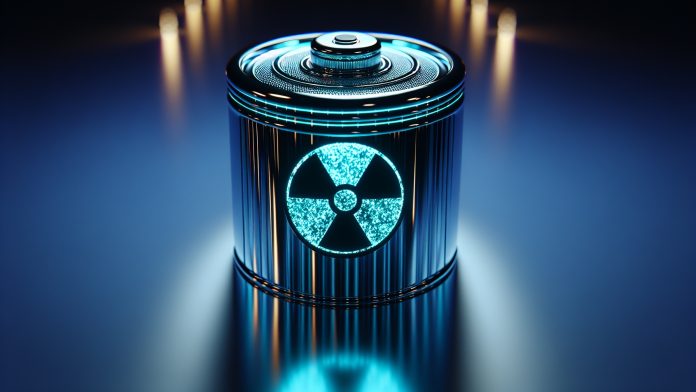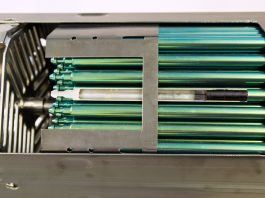A groundbreaking advancement in energy technology has emerged as researchers successfully developed a nuclear battery capable of transforming nuclear energy into electricity using light emission.
This innovation could help repurpose radioactive waste, offering a sustainable solution to one of the most persistent challenges in nuclear power production.
Nuclear power plants provide about 20% of the electricity in the United States while producing minimal greenhouse gas emissions.
However, they also generate radioactive waste, which poses significant health and environmental risks. Safe disposal of this waste remains a key concern for the industry.
The newly developed nuclear battery presents a potential way to convert this hazardous byproduct into a useful energy source.
The science behind the nuclear battery
The research team, led by experts from Ohio State University, designed the nuclear battery using a combination of scintillator crystals – specialised materials that emit light when exposed to radiation – and solar cells.
This setup allows the device to harvest gamma radiation from its environment and convert it into electricity, demonstrating a novel way to extract energy from radioactive waste.
The prototype, measuring just four cubic centimetres, was tested using two radioactive isotopes: cesium-137 and cobalt-60.
These isotopes are among the most common byproducts of spent nuclear fuel, making them ideal for real-world applications. When exposed to cesium-137, the battery generated 288 nanowatts of power.
In contrast, cobalt-60 – being a much stronger source of radiation – produced 1.5 microwatts of electricity, sufficient to power a tiny sensor.
Potential applications and safety considerations
While the power output is currently small compared to household electronics, researchers believe that scaling up the technology could allow for watt-level applications.
This could make the nuclear battery particularly useful for specialised environments where conventional batteries are impractical, such as deep-sea exploration, space missions, and nuclear waste storage sites.
Importantly, although the device utilises gamma radiation, which is significantly more penetrating than typical X-rays or CT scans, the battery itself does not contain radioactive material. This makes it safe to handle despite its function in energy conversion.
The concept revolves around harnessing radiation present in nuclear waste environments rather than incorporating hazardous materials directly into the battery.
Future directions for nuclear battery technology
The researchers observed that the efficiency of the battery could be influenced by the type, size, and shape of the scintillator crystals used.
A larger crystal volume enables better radiation absorption, leading to higher energy conversion. Additionally, optimising the surface area of the solar cells can further enhance power generation.
Despite the promising results, the technology remains in its early stages. Scaling up production and ensuring cost-effectiveness will be critical challenges.
Further research will focus on improving power output and determining the long-term durability of these batteries in high-radiation environments.
If successfully developed at scale, nuclear batteries could provide a revolutionary way to utilise radioactive waste for energy production, reducing environmental risks while offering a long-term power solution for extreme and remote locations.
As researchers continue to refine the design and explore commercial viability, this innovation could pave the way for a cleaner, more efficient future in energy technology.









